Over my 3 years working in kitchens, I’ve learned a few things about how they work, and who they hire. Most people hate finding a new job, but I always thought it was the best part of losing/leaving your old one. There is so much possibility, and so much opportunity for you to leave a good impression with influential people in the industry.
So here are my tips on how to find a job in a kitchen:
1. Make a list
I always start my search with a list of the places I want to work. I emphasize want, because enthusiasm and honesty is going to be a common theme. It’s important that your list be filled with places you picked purposefully. By that I mean, there is a reason that that place legitimately attracts you to want to work there… Whether it be the reputation of the head chef, or the style of cuisine, it’s important that the idea of joining the kitchen excites you. The other thing to remember is geography. Before I apply anywhere, I like to figure out how accessible it is for me. Nothing is worse than getting a job, then figuring out you can’t make your shifts due to accessibility. So once I have my list, I organize them by area, because that information will be the same for all the neighbouring restaurants. Where I am working now isn’t that close to me, however it isn’t horrible by bike, and the bus gets me there on time, even on holiday and weekend schedules. This sounds like a lot of work, but it isn’t. I spend maybe 30 mins putting this together. Usually I pick the top three places I’d love to work, then pick the rest of my list based on those locations (later on this list, I’ll get into more detail about why I do it this way). This shouldn’t be a long list, 3-10 places is ideal.
2. Make a friend.
Knowing what you’re walking into is always important, making a friend who works there is always a good idea. I always call these places in advance. The goal here is not to apply but rather get 3 basic pieces of information. (1) Who is the chef/kitchen manager, (2) What time they work, and (3) If the person I’m talking to likes their job. That’s it. The people answering the phones are hired to be helpful. That being said, remember whoever you’re speaking to owes you nothing. So be pleasant, acknowledge you’re looking for help, and make sure to thank them. Quite often, a little respect will go along way! These phone calls work best during off hours. I tend to call restaurants between 1:30-4. It’s in between rushes, and they are less likely to cut your conversation short. If you’re dream job happens to be at a hotel kitchen, even better. Call after 9pm. The person who works the front desk has all the information you’re looking for, and is not dealing with a lot of customers.
3. Avoid applying online, at first, especially job sites.
Most places don’t advertise they are looking, and a lot will hire a good worker even if they are not looking. I always glance at these sites, just to see what the job market looks like. If you apply online, you’re missing out on the chance to show your passion for the job. I have applied online before; but almost always after I met the person in charge of hiring before hand. It puts me in a situation where my resume will stand out, and if I left a good enough impression, they will seek my resume out immediately. This is how I got my current job, I walked in, and met the chef. He took my resume and said he would set up an interview as soon as I applied online. There have been a few situations where I apply before, but I always go in and try to meet the person in charge of hiring afterwords. Nothing can replace a handshake and a smile. And that’s what I usually tell them. Which brings me to my next point
4. Apply in person!
You have your list! Since you organized your list well, all the places are close to each other, you now know who you need to speak to, and when they are working…. you have everything you need. So go do it. When you walk into a restaurant and ask for the chef or kitchen manager by name, most people don’t ask too many questions. They assume you have a legitimate reason for coming in, which you do. If they do ask why you’re in, tell them the truth. ‘I am hoping to join the team; I understand he’s the person to talk to’. There will be times where the chef/kitchen manager is too busy to meet with you. You might get told to leave your resume or apply online, and you should do exactly that, but before you leave, ask when is a better time to catch him/her, then come back with an extra copy of your resume at that time. Let that person know you just wanted to make sure he got it, and that you had a chance to match a face with the name. I always bring a few extra copies of my resume. This is in case I walk by a restaurant I didn’t know about, and want to apply on a whim. Applying on a whim is done the same way! Simply ask the person at the front the same questions you would have if you’d called. Sometimes you’ll get lucky, and the chef/kitchen manager will come out right away. Just to drive the point home, which is how I got my current job!
5. Ask for an interview as soon as the opportunity arises
This is crucial. Don’t put yourself in a position where you’re waiting for calls. As my last point illustrated, as soon as you have made contact with that person, and have explained why you’re there; ask for an interview. ‘Do you have time to sit down and see if I’d be a good fit’, or even ‘when can I come back for an interview’.
6. What to do and say when you get the interview
This is the easiest advice I can give you. Always tell them the truth. If you’re inexperienced, tell them. Much better they know you need training before hand, and a lot of chefs will see that as an opportunity to teach you good habits. If you’re just looking for work during the summer, before you go back to school, tell them. I have been told I’m a great interview, and I attribute it to the fact I’m upfront and honest. Another thing I always make sure, is that at the end of the interview, I ask two very important questions: How did I do, and, when can I expect to hear back from you.
7. Follow up
I can’t stress this enough. Running a restaurant is hard work. You’re not the first thing on their mind. Phone numbers get lost, and people get distracted. If you have followed my instructions thus far, you should have one or two restaurants that have either given you an interview, or told when would be a better time to apply. Either way, you should have a timeline of when you should contact them again. These calls are often as valuable as past work experiences. Remember, if you don’t get the job, you now have nothing to lose! I ask questions, and if there is anyway I could have improved my chances. If there was any experience I was lacking, or any skills I could improve. Finally, I ask if in the future any of those change, can I apply again. I promise you, it will be worth it.
8. If you can’t handle the heat; stay out of the kitchen.
I want to work in a kitchen. Kitchen work is hard work, crap hours with low pay. The only benefit for me is that I love doing it. There are lots of jobs that pay the same or more and give better hours.
Hopefully this helps. I know it seems like a lot more work than simply applying to all of the jobs on Monster.com or Indeed, but remember, that’s how everyone else applies. A lot of these places get more applications than they can handle. So you’re gambling they will open your application before making a decision. Taking the time to help yourself stand out, and show you’re passionate, will increase your chances of having the employer look for you!
Wash and dry your broccoli throughly. Broccoli grows in dirt, and who wants to eat dirt?
Place 4 cups of water and a steamer basket into a pot. The water level should not be higher than the basket. My pot came with a basket that sits on top of the pot.
Put the pot on high heat, and wait for a good head of steam to form. Put your broccoli in the basket, and place the lid on.
Wait 3 minutes, and check to see if your broccoli has turned bright green, and is fork tender. Reserve steaming water for later
Place the cooked broccoli into a food processor, and pulse until the broccoli pieces are the size of small bread crumbs. I didn’t have a big enough food processor, so I did mine in batches. Put the broccoli in a pitcher, and switch to a immersion blender for the rest of the recipe.
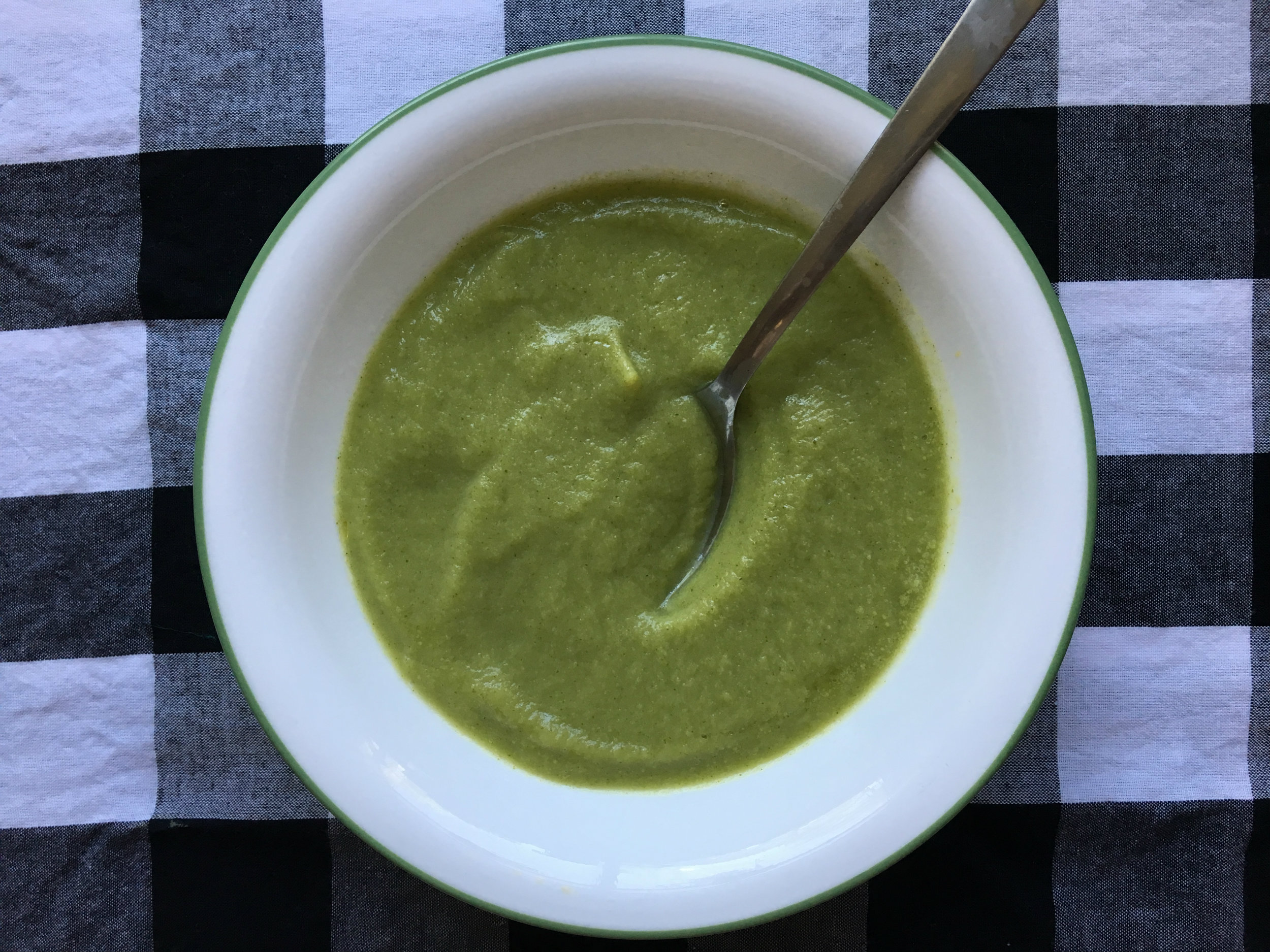
 Let your ribs sit out for about 30 mins, it’s easier to work with at room temperature.
Let your ribs sit out for about 30 mins, it’s easier to work with at room temperature.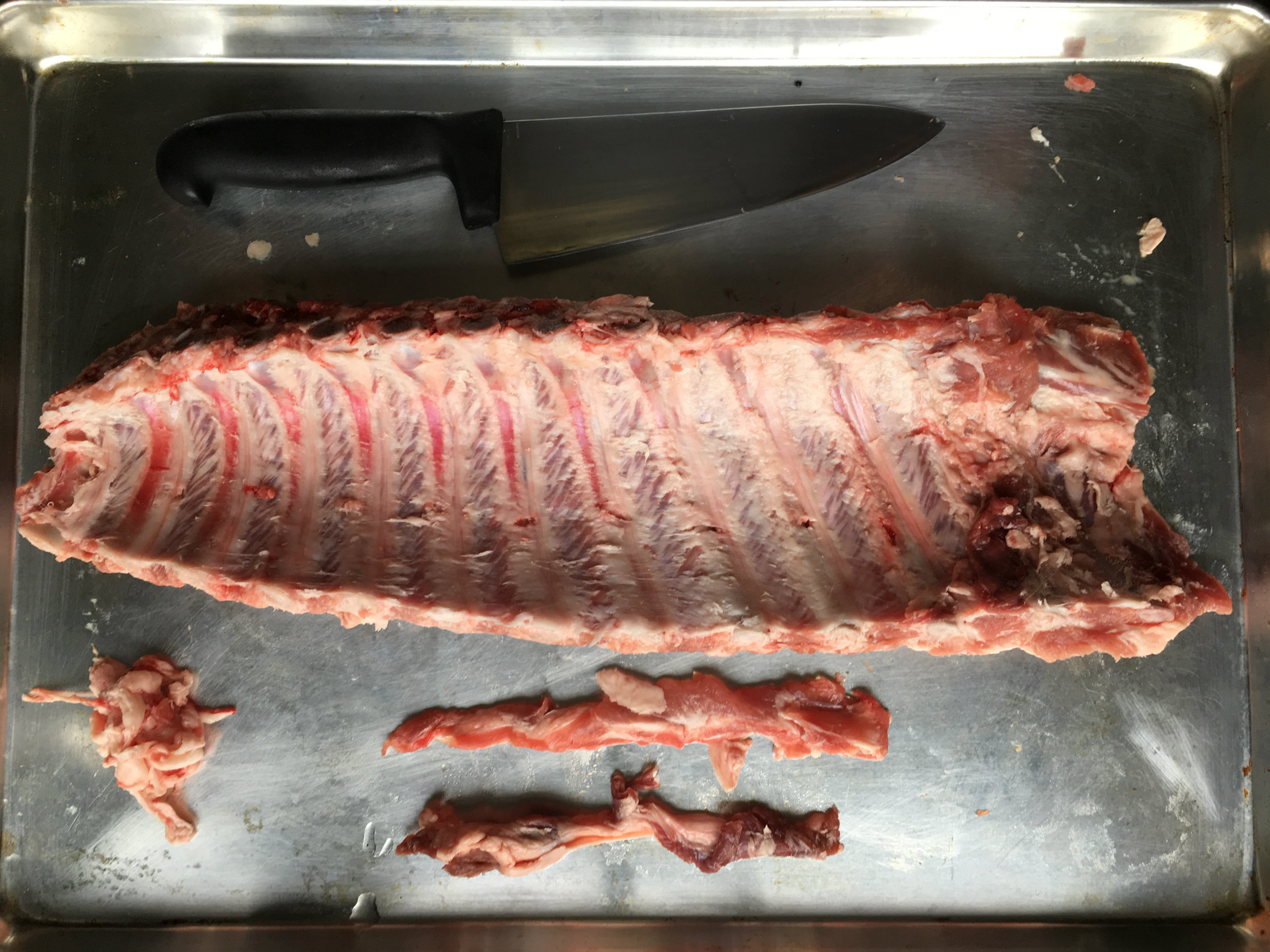 Trim your ribs of any extra “flabs” of meat. these will cook too fast, and generally be unappealing, also you want to remove the pulmonary pleura (Aka the thick membrane on the concave side of the ribs). There are some myths that this prevents flavour from penetrating into the meat, but that isn’t true. It does however create a chewy texture. You can remove it by using a knife to poke a hole in the membrane in the corner, and using your finger to pull it off. It should come off as one piece.
Trim your ribs of any extra “flabs” of meat. these will cook too fast, and generally be unappealing, also you want to remove the pulmonary pleura (Aka the thick membrane on the concave side of the ribs). There are some myths that this prevents flavour from penetrating into the meat, but that isn’t true. It does however create a chewy texture. You can remove it by using a knife to poke a hole in the membrane in the corner, and using your finger to pull it off. It should come off as one piece.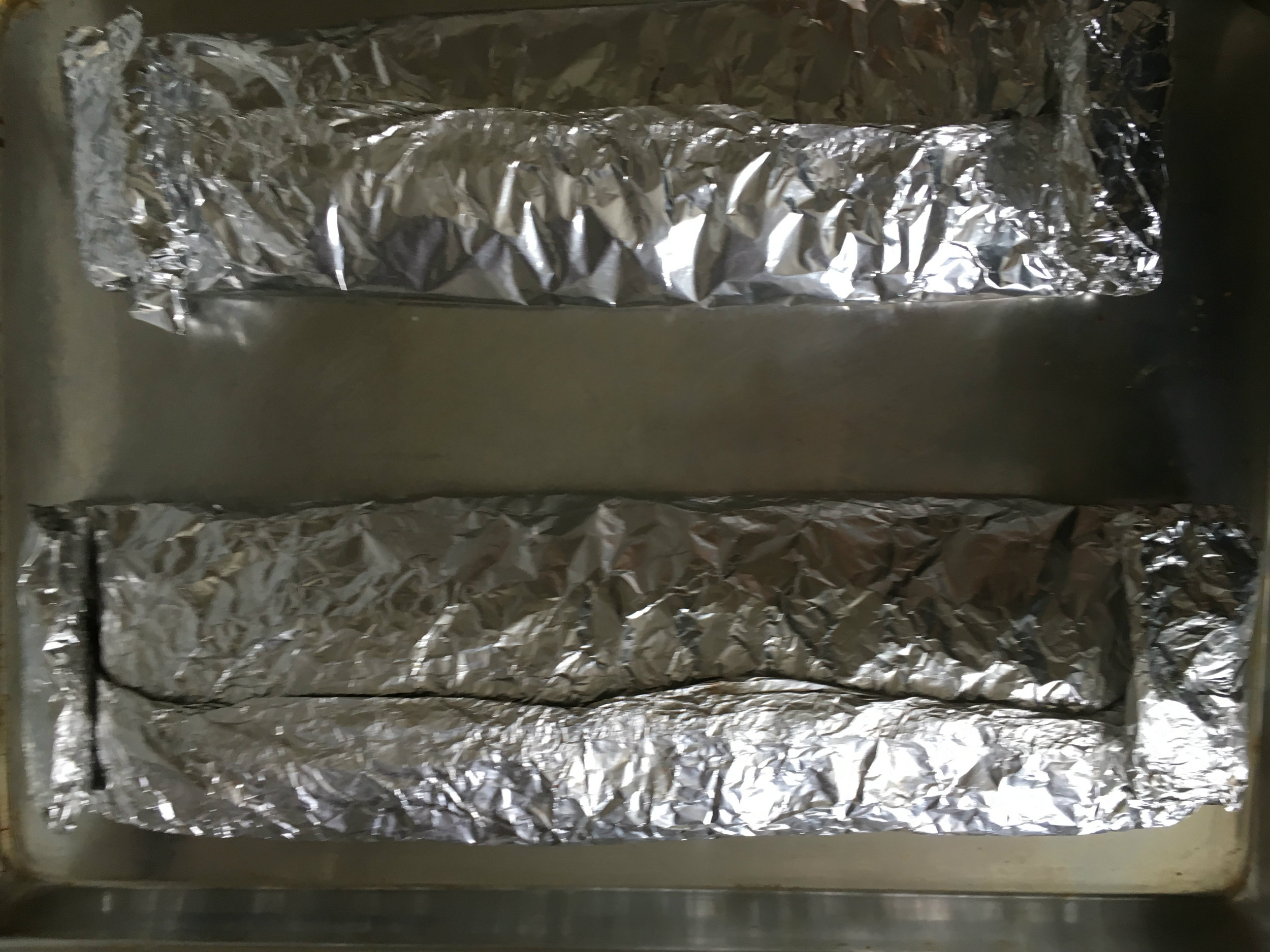 Place your ribs on top of wide heavy duty aluminum foil so the concave side is down. You want to wrap them so you have a tight seam on top of the ribs. Then tightly roll up one side of the foil, and loosely roll up the other.
Place your ribs on top of wide heavy duty aluminum foil so the concave side is down. You want to wrap them so you have a tight seam on top of the ribs. Then tightly roll up one side of the foil, and loosely roll up the other.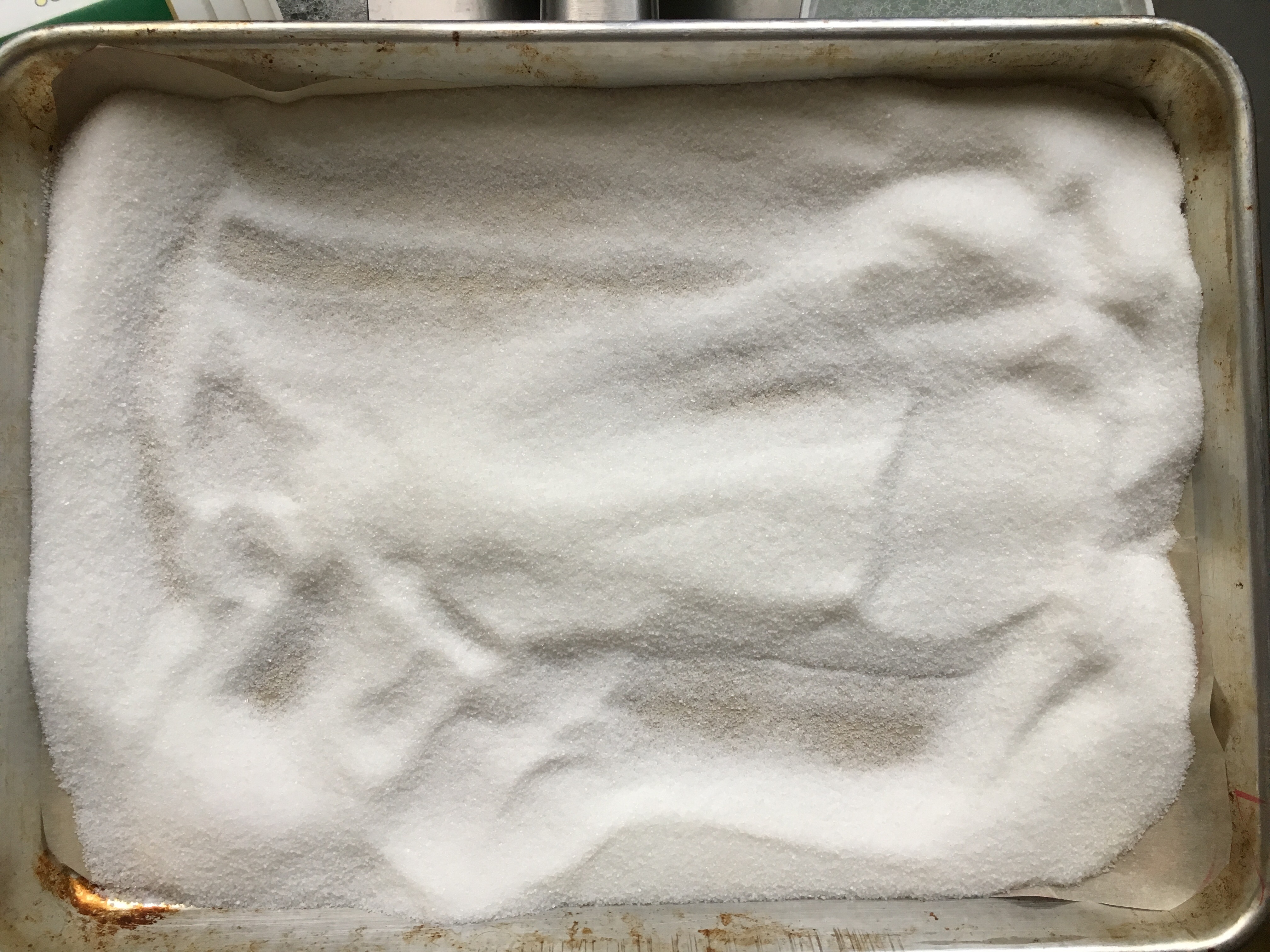 Place a piece of parchment paper on a sheet pan, and layer 283g of sugar evenly over the sheet pan.
Place a piece of parchment paper on a sheet pan, and layer 283g of sugar evenly over the sheet pan.
 Cut little crosses on the bottom of each Tomato. Do your best to cut the skin, and not into the flesh of your tomato. A Pearing knife, or small serrated knife will work well.
Cut little crosses on the bottom of each Tomato. Do your best to cut the skin, and not into the flesh of your tomato. A Pearing knife, or small serrated knife will work well. Into the same bowl as the Lemon and the Basil, whisk together the Olive Oil, Salt, pepper, and diced Onions.
Into the same bowl as the Lemon and the Basil, whisk together the Olive Oil, Salt, pepper, and diced Onions.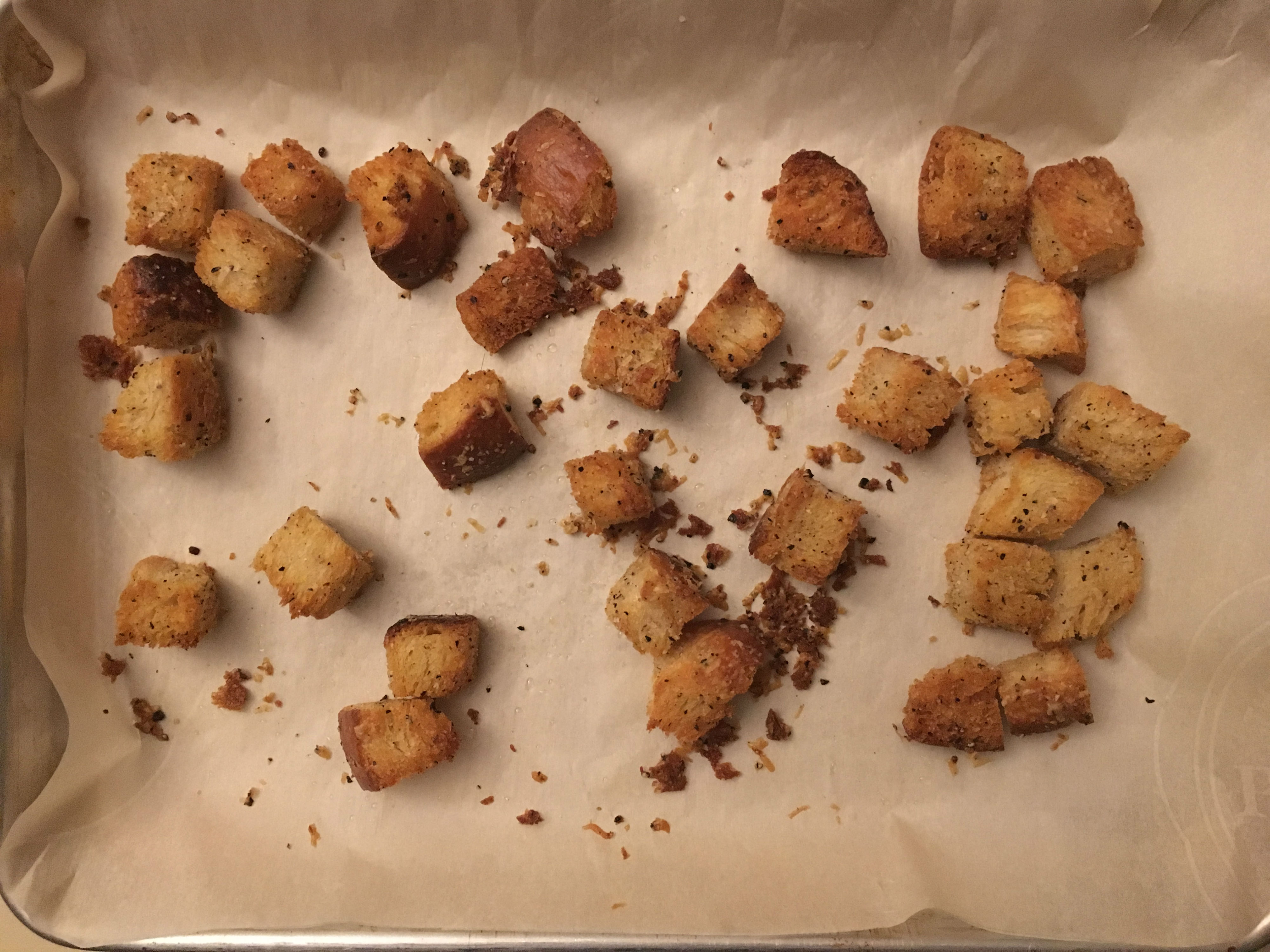 Remove from baking sheet, and let cool on the side until needed.
Remove from baking sheet, and let cool on the side until needed.
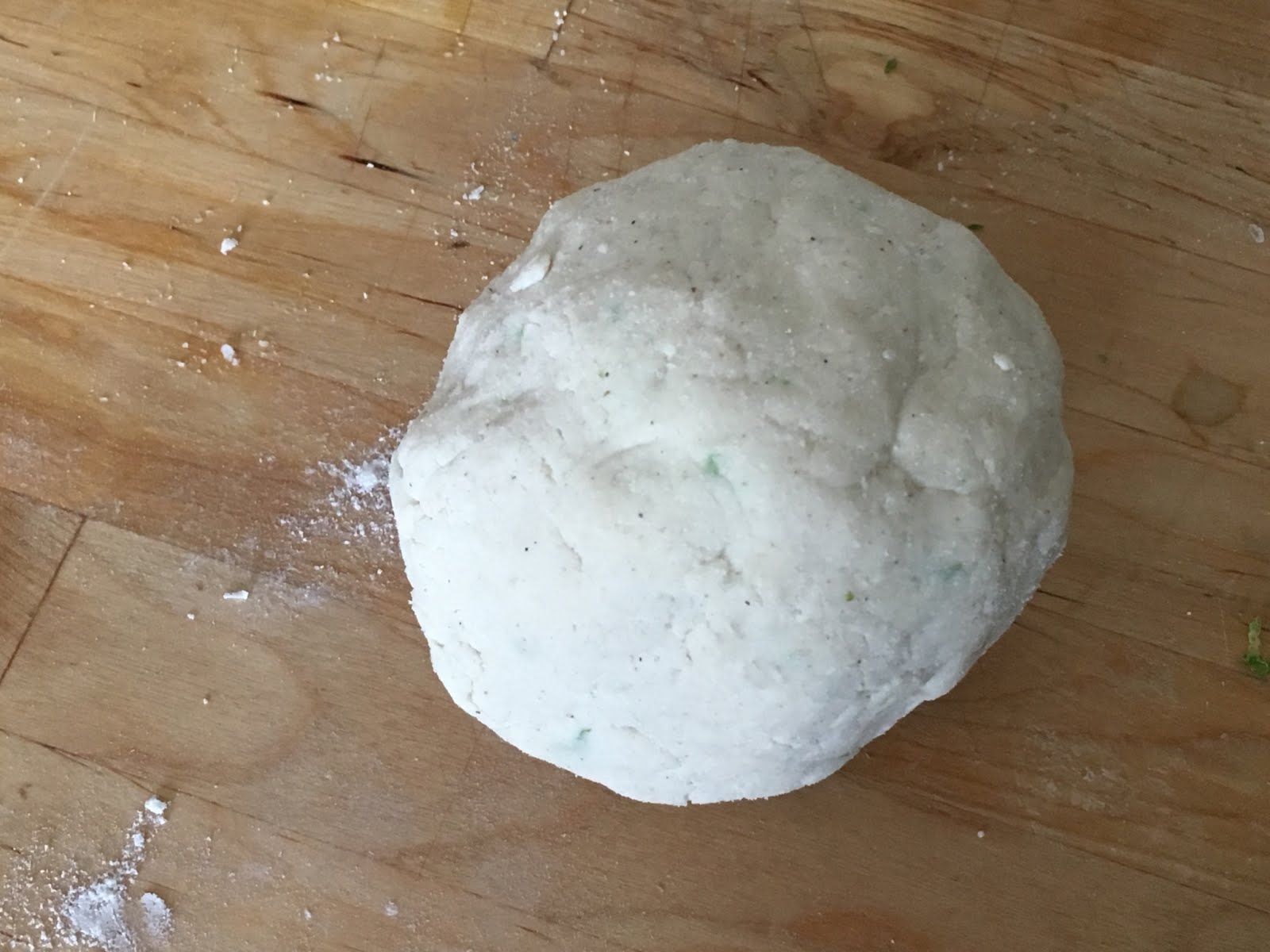 Divide the ball into 4, and roll each section into its own ball. Cover all of them with plastic wrap.
Divide the ball into 4, and roll each section into its own ball. Cover all of them with plastic wrap.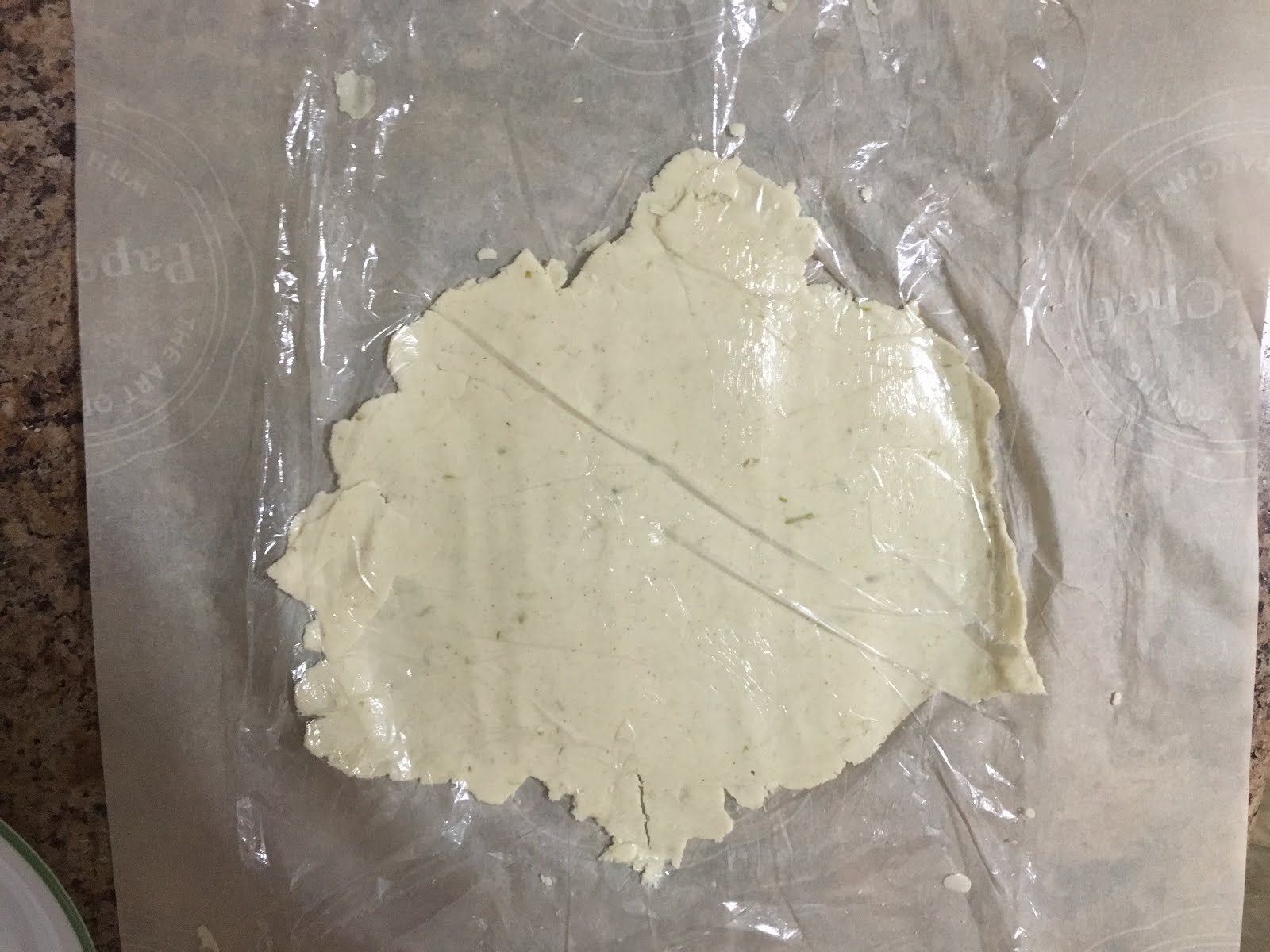 Use a rolling pin to roll the dough ball just until it’s wider than a soup bowl. Make sure to roll back and forth and side to side. FYI: At first your plastic wrap may cling to the dough causing it to curl upward. Simply lift the plastic wrap off the dough, gently place the dough down and put the plastic back. If the parchment becomes wrinkled, simply pull its corners.
Use a rolling pin to roll the dough ball just until it’s wider than a soup bowl. Make sure to roll back and forth and side to side. FYI: At first your plastic wrap may cling to the dough causing it to curl upward. Simply lift the plastic wrap off the dough, gently place the dough down and put the plastic back. If the parchment becomes wrinkled, simply pull its corners.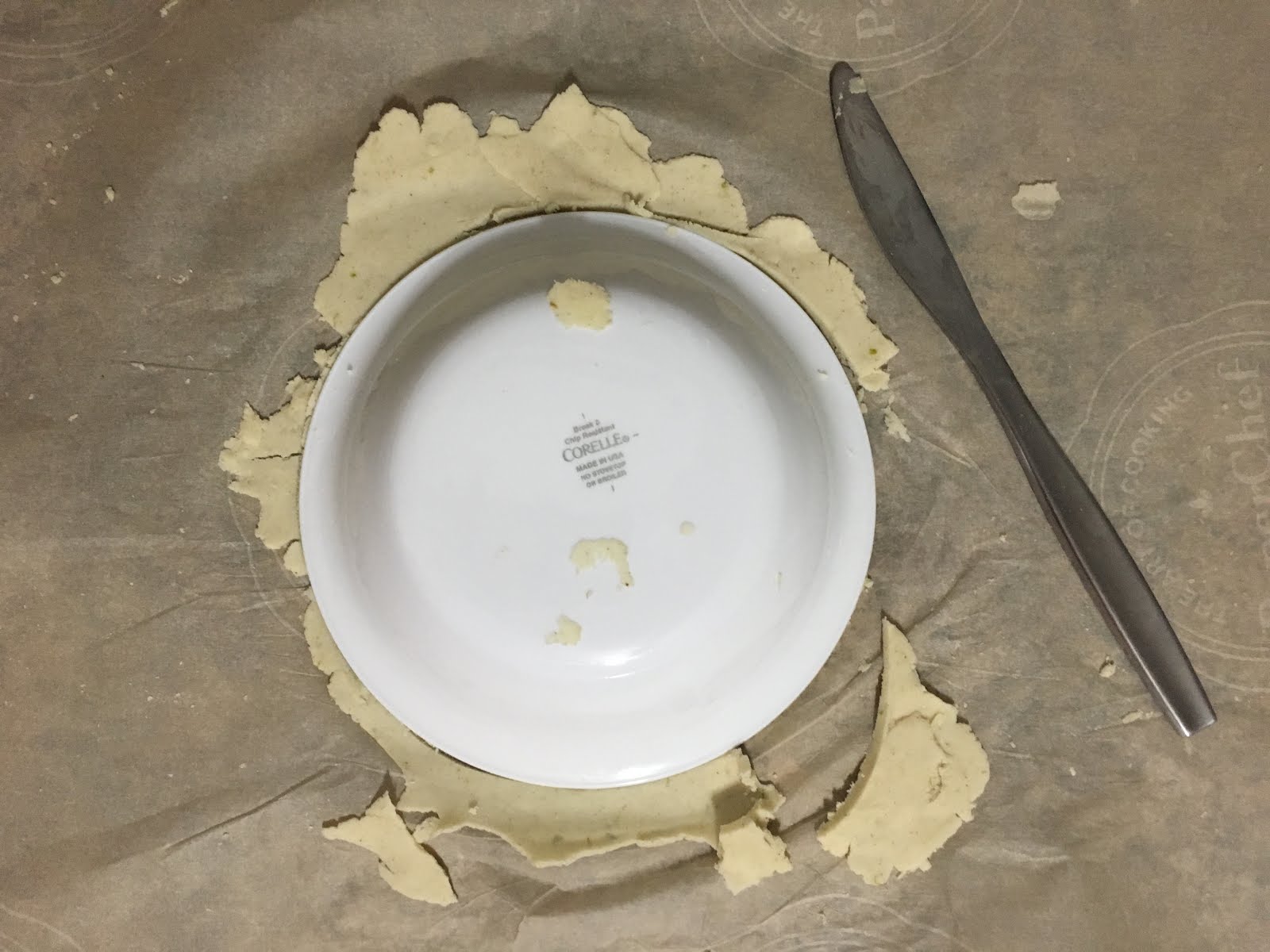 Gently remove your plastic wrap and place a bowl upside down on your dough, using a butter knife cut around the rim of your bowl, this will give you perfectly shaped tortillas. Use the scrap pieces to fill any cuts, are place the rest to the side. There is no gluten in Masa, so you don’t have to worry about over working it.
Gently remove your plastic wrap and place a bowl upside down on your dough, using a butter knife cut around the rim of your bowl, this will give you perfectly shaped tortillas. Use the scrap pieces to fill any cuts, are place the rest to the side. There is no gluten in Masa, so you don’t have to worry about over working it.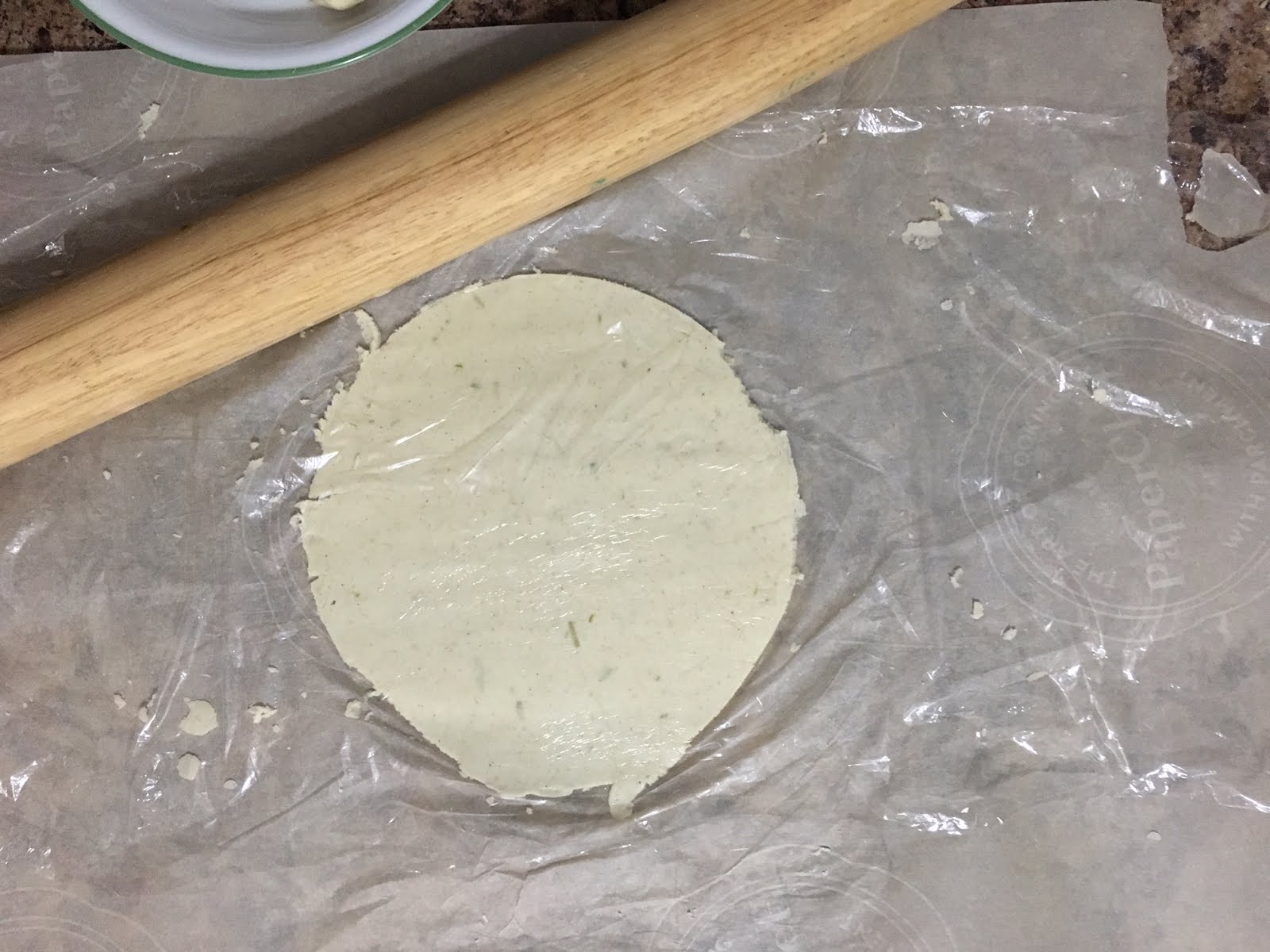 Place the plastic wrap back on top of the dough and use rolling pin thing out the tortilla to about 1/6″
Place the plastic wrap back on top of the dough and use rolling pin thing out the tortilla to about 1/6″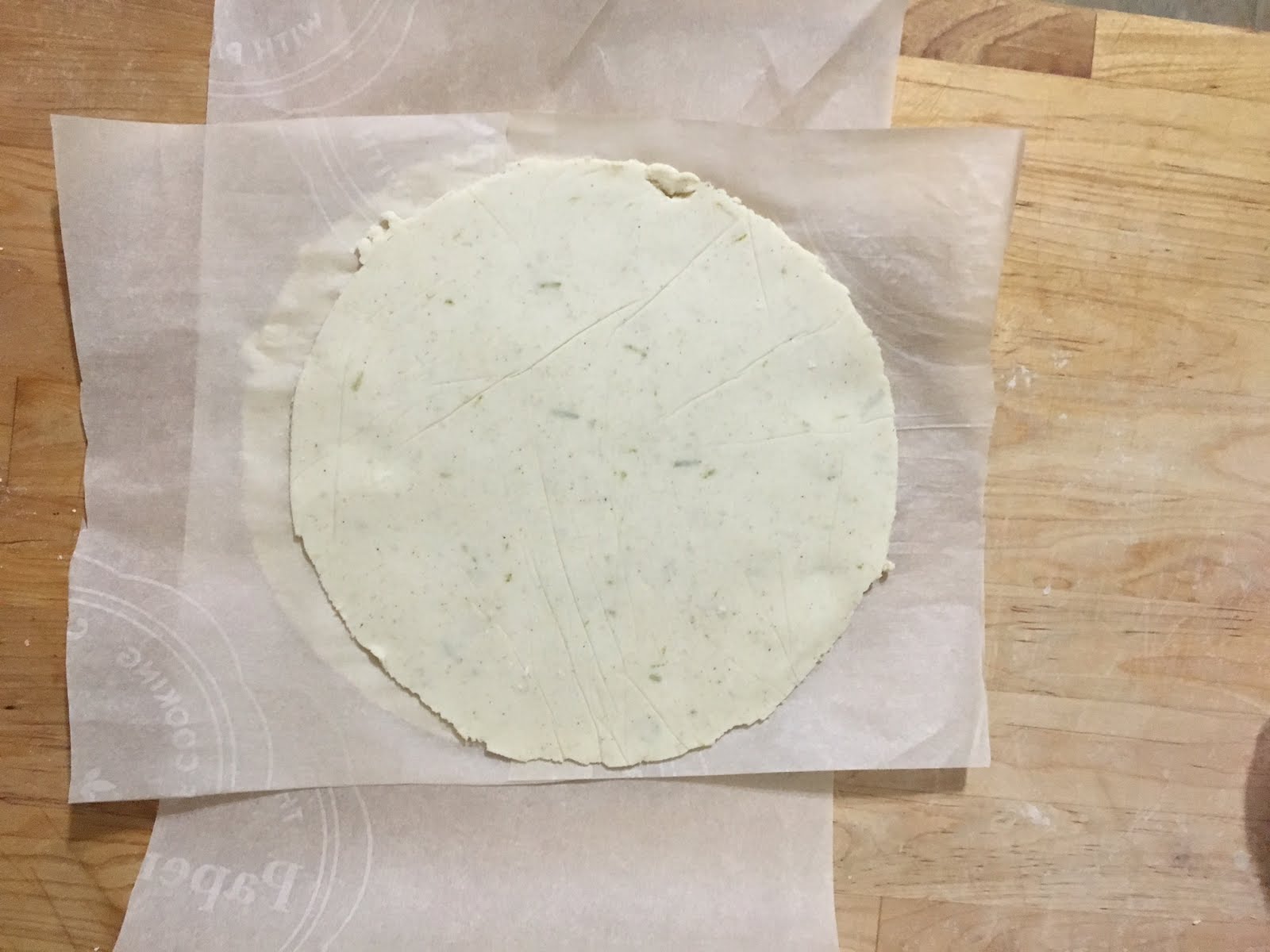 Slowly peel the tortilla off the parchment, and place on the side till you’re ready to cook them. I place all the tortillas on top of each other with a piece of parchment paper to separate them. Cover with plastic wrap, or damp cloth.
Slowly peel the tortilla off the parchment, and place on the side till you’re ready to cook them. I place all the tortillas on top of each other with a piece of parchment paper to separate them. Cover with plastic wrap, or damp cloth.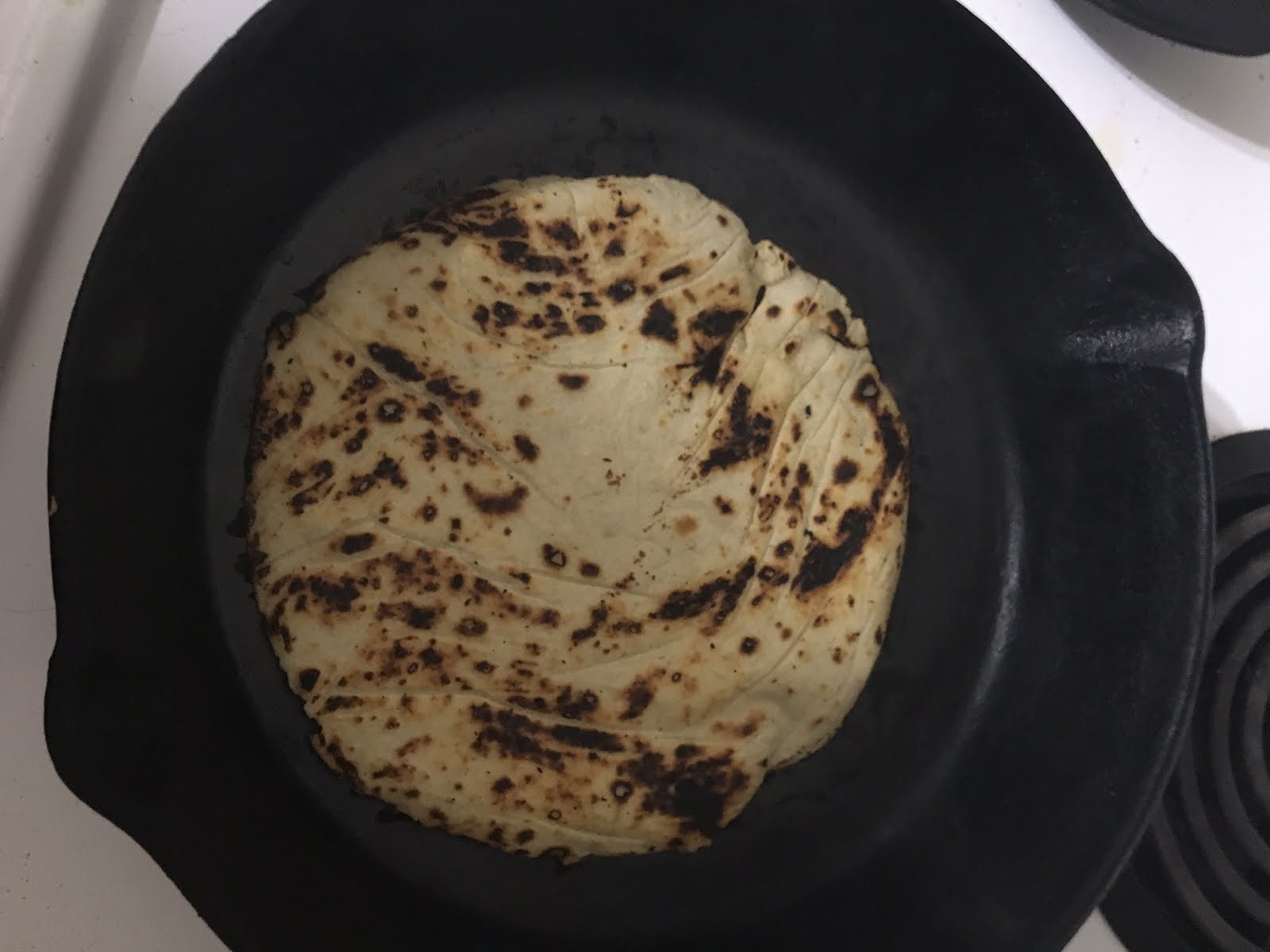 Cook each tortilla one at a time on a non greased cast iron pan set to high heat. If you don’t have cast iron, you can use a stainless steel pan, but you will have to wait longer in between cooking each tortilla for the stainless to regain its heat. It should take about 30-40 seconds on the first side, and about 20 seconds on the other side. They may puff up, thats a good thing, it means they are well rolled.
Cook each tortilla one at a time on a non greased cast iron pan set to high heat. If you don’t have cast iron, you can use a stainless steel pan, but you will have to wait longer in between cooking each tortilla for the stainless to regain its heat. It should take about 30-40 seconds on the first side, and about 20 seconds on the other side. They may puff up, thats a good thing, it means they are well rolled. Using tongs, pick up a cooked tortilla, and lower it into the oil so that only half of it is frying. Using the a wooden spoon push down any big bubbles that form.
Using tongs, pick up a cooked tortilla, and lower it into the oil so that only half of it is frying. Using the a wooden spoon push down any big bubbles that form.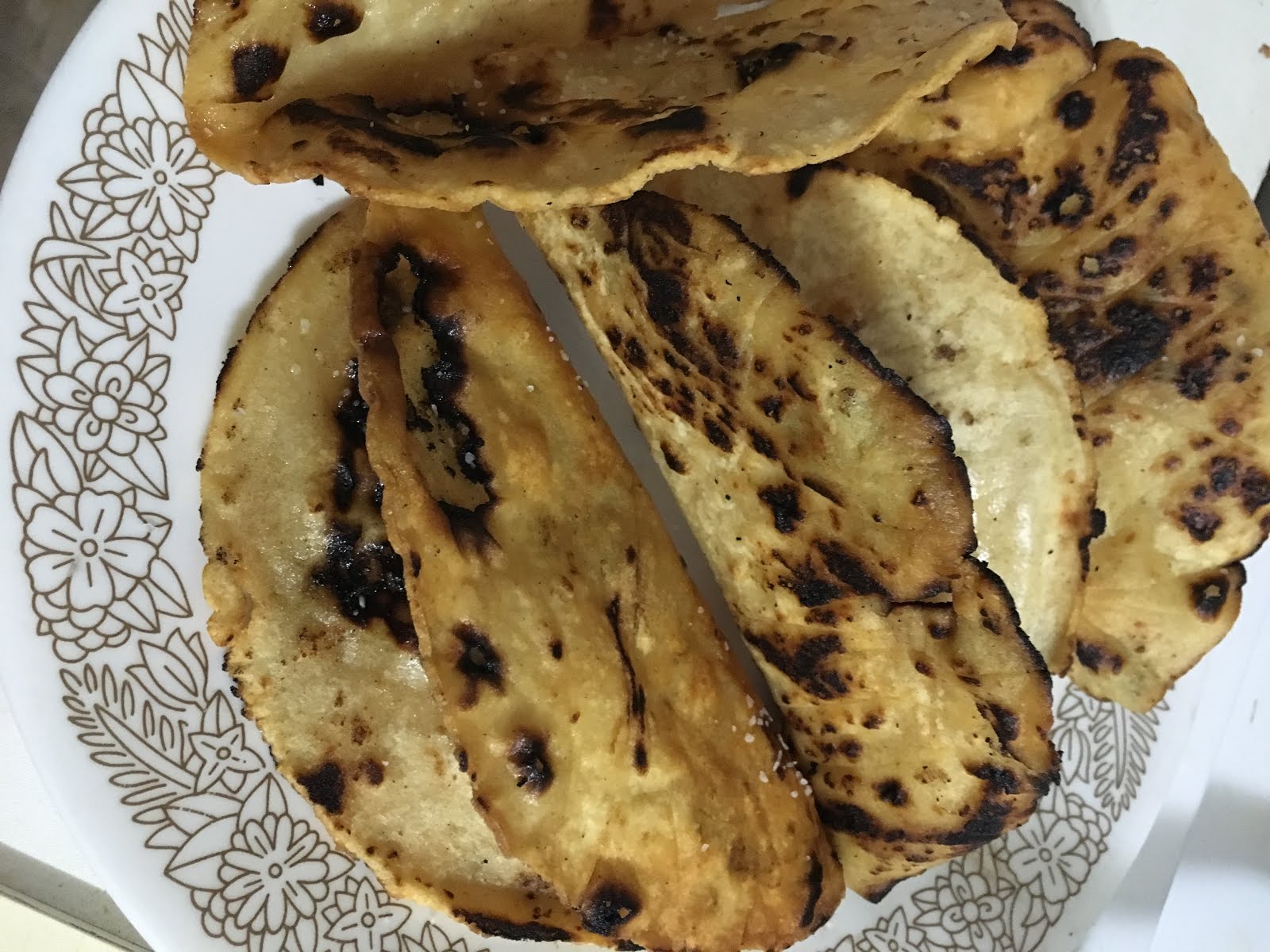 Once the shell holds its shape, move to the side and sprinkle with salt.
Once the shell holds its shape, move to the side and sprinkle with salt.
